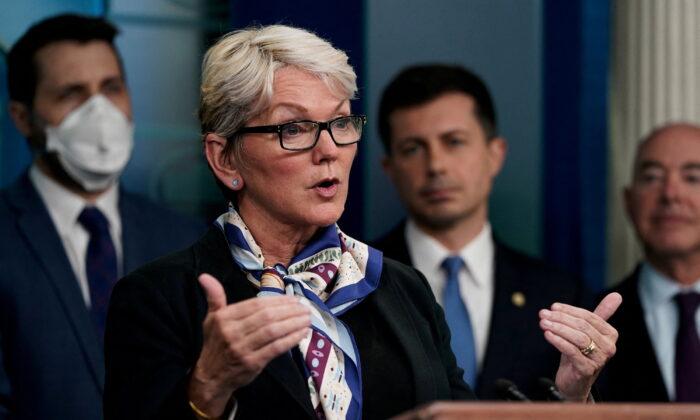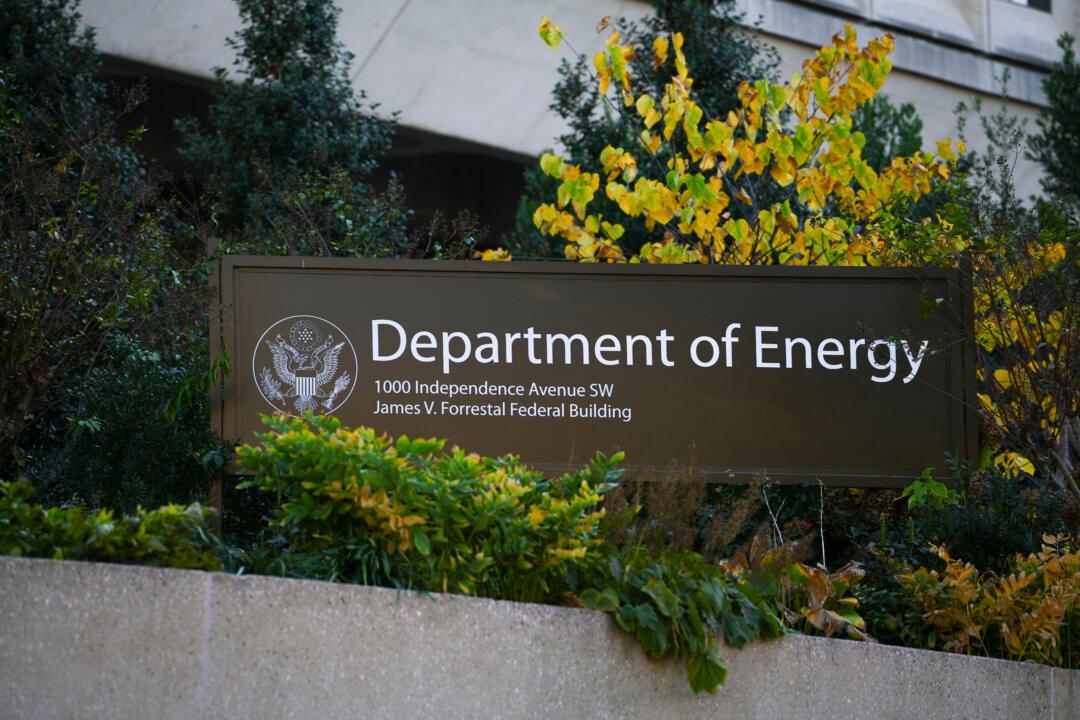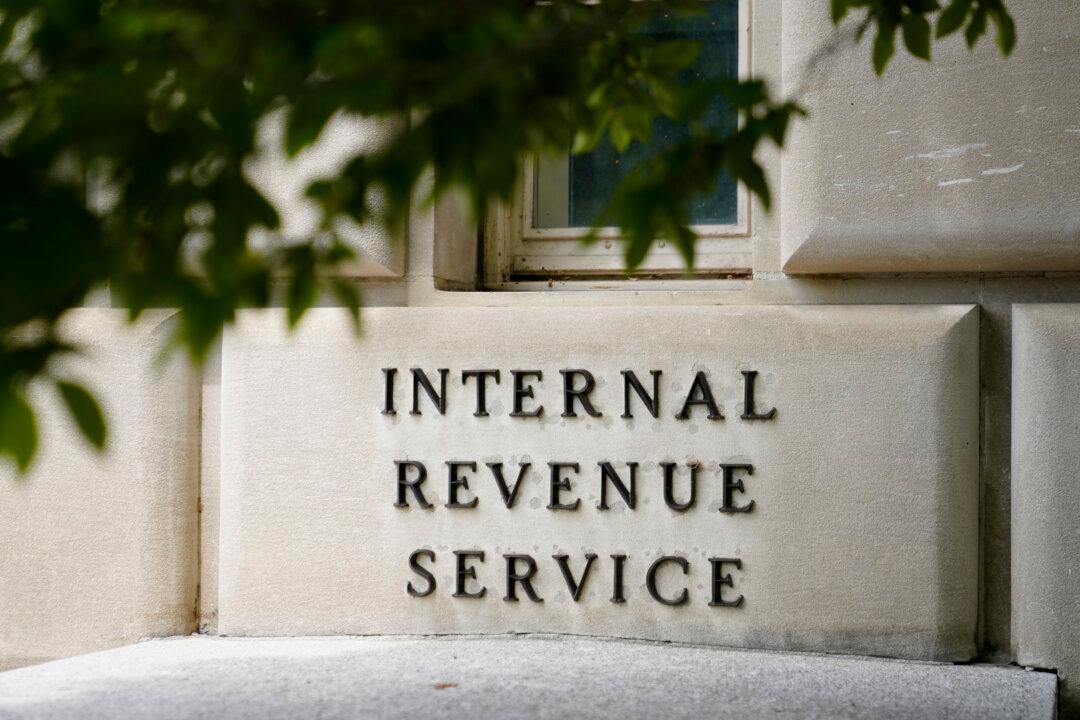The Biden administration revealed its “zero emissions” policy for federal buildings that would effectively ban the use of natural gas appliances in such facilities.
On Wednesday, the U.S. Department of Energy (DOE) announced the “Clean Energy for New Federal Buildings and Major Renovations of Federal Buildings Rule” requiring agencies to phase out the use of fossil fuels when constructing new buildings or conducting major renovations. It mandates agencies to achieve a “90 percent reduction in fossil fuel use for new projects started between fiscal years 2025 and 2029 and completely eliminating on-site fossil fuel usage in new projects beginning in 2030.”
As such, new federal buildings built after 2030 will no longer have features like natural gas piping necessary to fuel stoves and other appliances.
Once federal buildings are made compliant, the buildings will “reduce pollution, improve air quality, create good-paying jobs, and take advantage of cost savings from using more energy-efficient equipment,” the DOE claimed.
Such measures “will help advance the adoption of cleaner, more efficient technologies for buildings that will lead the way to achieving President Biden’s Federal Sustainability Plan goal of net-zero emissions from all federal buildings by 2045.”
According to DOE estimates, the new rule will cut down carbon emissions from federal buildings by 2 million metric tons over the next three decades. Methane emissions will be cut by 16,000 tons, according to the estimates, which is roughly equivalent to the emissions produced by almost 310,000 homes in a year.
“The Biden-Harris Administration is practicing what we preach. Just as we are helping households and businesses across the nation save money by saving energy, we are doing the same in our own federal buildings,” said Secretary of Energy Jennifer M. Granholm.
Earlier this month, the DOE finalized energy efficiency standards for general service lamps (GSL) phasing out compact fluorescent bulbs (CFLs). The new standards can only be fulfilled by LED bulbs. Incandescent light bulbs were effectively banned by the agency last year.
In October 2023, the DOE listed several appliances they intended to target over a one-year period with stringent energy standards, which included ceiling fan light kits, consumer water heaters, direct heating equipment, consumer boilers, fans and blowers, electric motors, furnace fans, microwave ovens, clothes dryers, and air cleaners.
Biden’s Climate Agenda for Buildings
While the administration is pushing ahead with decarbonizing federal buildings, a September 2023 report by the U.S. Government Accountability Office (GAO) raised questions about the viability of such endeavors.The U.S. General Services Administration (GSA) is tasked with managing federal properties. The agency oversees 8,600 buildings that it owns or leases to federal agencies. An executive order signed by President Biden in 2021 set new federal sustainability goals for buildings.
While the GSA updated its practices to ensure the energy efficiency of buildings, “GSA officials said it will be hard to meet these goals,” the report said.
“GSA officials said the scale and scope of the projects needed to achieve net-zero building emissions by 2045 will require resources beyond what has historically been available. Officials from nearly all of GSA’s 11 regions expressed little confidence in their ability to meet this goal.”
In addition, GSA officials “also cited limited market options as a challenge in meeting future federal sustainability goals. Officials from more than half of GSA’s regions told GAO that their access to carbon-free electricity is currently limited—and nearly all expressed little confidence in their ability to achieve the goal of 100 percent carbon-free electricity use by 2030.”
The DOE’s latest climate rule for federal buildings comes after the agency released its first blueprint to decarbonize America’s buildings.
The plan, “Decarbonizing the U.S. Economy by 2050: A National Blueprint for the Buildings Sector,” aims to cut down greenhouse gas emissions from American buildings by 65 percent by 2035 and 90 percent by 2050.
“The Blueprint seeks to reduce greenhouse gas emissions attributable to the construction and use of homes as well as public and commercial buildings. Virtually every provision in it would be bad news from a homeowner perspective,” he wrote. “The Blueprint calls for environmentally-friendlier but very likely costlier construction materials.”
Mr. Lieberman said the blueprint also pushes for unprecedented reductions in direct building emissions from on-site fossil fuel combustion. “In plain English, this means moving away from residential natural gas use for heating and other purposes and in favor of the electrification of everything, a major crusade among climate activists,” he explained.
He pointed out that the DOE itself has admitted that natural gas is at least “three times cheaper” compared to electricity on a per unit energy basis. Yet, the agency is “knowingly choosing climate advocacy over consumer advocacy.”
This rule also leads to an increase in equipment costs, he noted. “The Blueprint particularly favors electric heat pumps that are very expensive up-front and don’t make sense for some parts of the country.”







